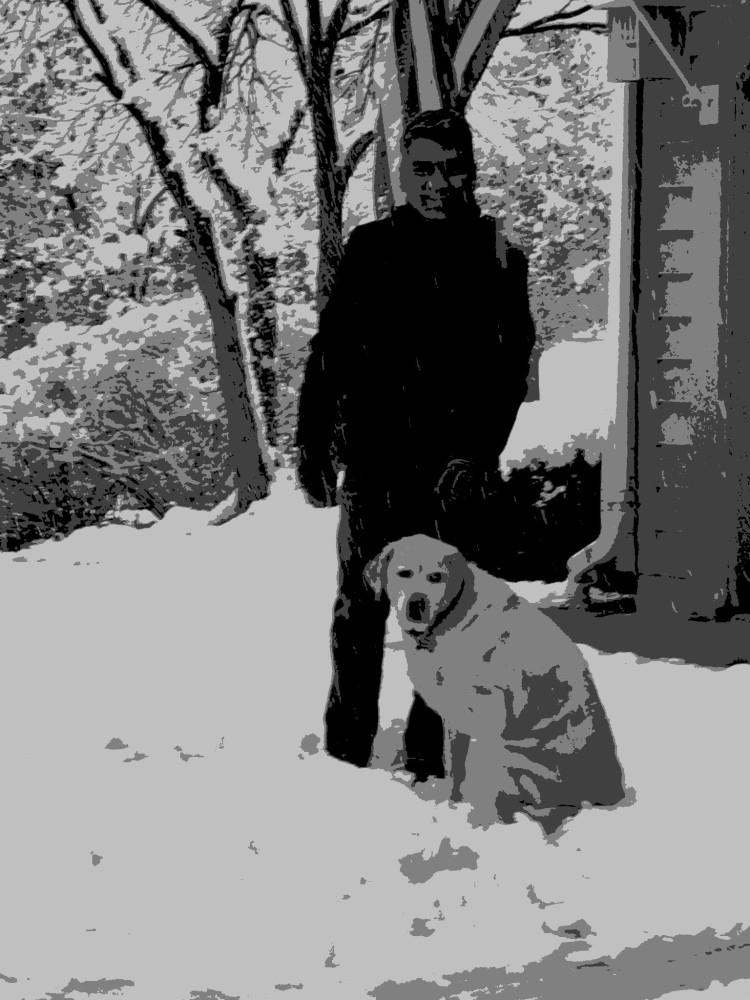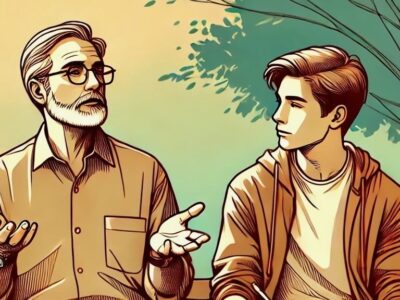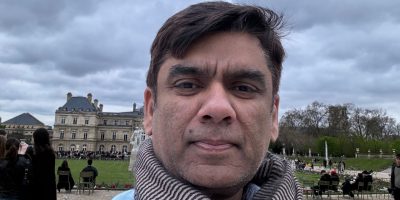Is it possible that Grief, the emotion we try so hard to avoid, maybe the key to living a more fulfilled life?
I didn’t believe it either—until I was forced to face it head-on. Last year, my kids lost a grandparent and my wife and I, a parent. A few years before that, we had lost Chottu – our golden lab who filled our home with love and laughter. These losses weren’t just about saying goodbye; they were about learning how to live differently, how to navigate emptiness, and find meaning in the absence.
Grief is universal, yet deeply personal. It touches all of us at some point, whether through the loss of a loved one, a beloved pet, or even the life we once knew. And I’ve come to understand that we experience grief in three ways: individually, as families, and as communities. Each of these perspectives teaches us something about life, and together, they shape how we grow through loss. As Mo Gawdat, the former chief business officer at Google X, says, “Grieve fully, accept the finality, and take a leap of faith.”
That’s the journey grief asks us to take.
Personal Loss – Facing Grief Alone
When we lost Chottu, it wasn’t just the absence of our beloved dog. It was the loss of routine, of joy, of a certain presence in our home. As individuals, we experience grief as a deeply personal emotion. Grief is not linear. It’s more like waves in the ocean. Some days the water is calm, and we think we’ve moved on. But then, out of nowhere, a storm hits, and we’re submerged again. It comes in cycles – anger, sadness, disbelief – and each time it feels like you’re drowning. But then, just like waves, it subsides.

Losing Chottu wasn’t just about losing a pet. It was about losing the part of our day that revolved around him – the walks, the morning cuddles, the way his tail wagged like a metronome of happiness. It was the silence in a once-lively home that hit hardest. The house felt quieter, emptier as if the air had stilled and the joy had left with him. This is the first lesson of grief: it forces you to face change head-on.
Carl Jung once said, “We cannot change anything until we accept it. Condemnation does not liberate; it oppresses.” Grief is the ultimate liberator. It pulls us out of the life we knew and forces us into something new—something we may not be ready for. But resisting it only makes it harder. The more we try to run from the pain, the more it chases us.
As individuals, we must learn to embrace grief fully, to let ourselves feel every emotion without judgment. It’s in that process that we start to find peace – not by overcoming grief, but by learning to live with it.
Family Loss – Grieving Together, Yet Apart
When we lost my kids’ grandfather, the grief felt different. It wasn’t just my wife and mine to carry – it belonged to the whole family. And that’s where things get complicated. While grief is deeply personal, it also becomes a shared experience within families. But here’s the thing: families don’t always grieve in harmony. They often grieve in conflict.
Our loss was one thing, but watching my children and wife’s siblings grieve was another. Each person processed it in their own way. Some were quiet, others cried, and still others tried to carry on as if nothing had changed. This is where grief becomes messy. We start to fall into the trap of thinking, my loss is the biggest loss. We each feel our pain so intensely that we forget those around us are hurting too.
While I needed silence, my wife needed to talk. While I sought solitude, my kids needed comfort. This is the second lesson of grief: it forces us to confront the way we grieve collectively, even when it feels like we’re grieving alone.
It’s easy to believe that because we are grieving the same person, we should all process the loss the same way. But that’s not how it works. Every family member has their own relationship with the person who passed, and every relationship is unique.
Adler once said, “Empathy is seeing with the eyes of another, listening with the ears of another, and feeling with the heart of another.” Grief forces us to practice empathy on a deeper level. We have to listen to how others are grieving, even if it doesn’t match our own way.
There’s tension in grieving as a family, but there’s also healing. The misunderstandings that arose from our different coping mechanisms eventually gave way to mutual support. Grieving together allowed us to see each other in a new light—not as individuals coping with loss, but as a family unit learning how to live in the aftermath.
Shared Loss – The Power of Community
Then there’s shared loss—the kind of grief that goes beyond the family, that reaches into the community. This is the type of loss that happens when we lose a public figure, a celebrity, or even in the wake of a tragedy that affects many. It’s a different kind of grief, but it’s no less powerful.
When my family lost my Father-in-law, we weren’t the only ones grieving. Our extended family, neighbors, and friends all felt the loss in their own way. The outpouring of support – from meals delivered to phone calls and messages checking in – showed us something important: grief unites us in ways that joy often can’t.
It’s easy to think of grief as an isolating experience. But in reality, grief opens the door to empathy. It’s when we’re at our lowest that we see how connected we really are. People come together to offer support, to listen, to simply be there.
Simon Sinek said it best: “We’re not good at everything, we’re not good by ourselves. Our greatness comes from how we work with others.” Grief, in many ways, is the ultimate test of how we work with others – how we come together in the face of loss.
Shared grief is like a patchwork quilt. Each person brings their own story, their own relationship to the loss, but when we stitch those stories together, we create something stronger and more comforting. It’s in this collective experience of grief that we often find peace and resilience.
Mo Gawdat’s Three-Step Process
I have personally found peace from Mo’s experience and process – I am sharing this with all the gratitude in my heart for his generosity in sharing his own experience.
Mo Gawdat’s approach to grief is simple but profound. First, he says, grieve fully. This means allowing ourselves to feel every emotion – anger, sadness, confusion – without rushing the process. It’s about being present with our grief, no matter how uncomfortable it may be.
Second, accept the finality of death. This is what Mo calls “committed acceptance.” It’s about understanding that death is a part of life and that resisting this reality only prolongs the pain. It’s not about giving up; it’s about making peace with what cannot be changed.
Finally, take a leap of faith. This is the hardest part. It’s about believing in something greater than what we can see. Whether that’s faith in an afterlife, faith in the universe, or faith in the legacy left behind, it’s about trusting that death is not the end, but a transformation.
In my own journey through grief, these three steps have been regenerative. They’ve helped me not only through the loss of my Father-in-law and Chottu but also through the many small losses we experience every day—the loss of certainty, the loss of control, the loss of who we used to be.
Grief Connects Us
We grieve as individuals. We grieve as families. We grieve as communities. But through each of these lenses, we learn one important truth: grief changes us, but it also connects us.
Grief is not something we avoid or overcome – it’s something we live with. It teaches us more about life than anything else because it strips away the distractions and forces us to focus on what really matters: the people we love, the experiences we cherish, and the legacy we want to leave behind.
Don’t run from your grief. Embrace it. Let it change you, let it connect you to those around you.
Because in learning to grieve, you may learn to truly live.
We are all doing our best ~ Assume Positive Intent!
Adi













Comments